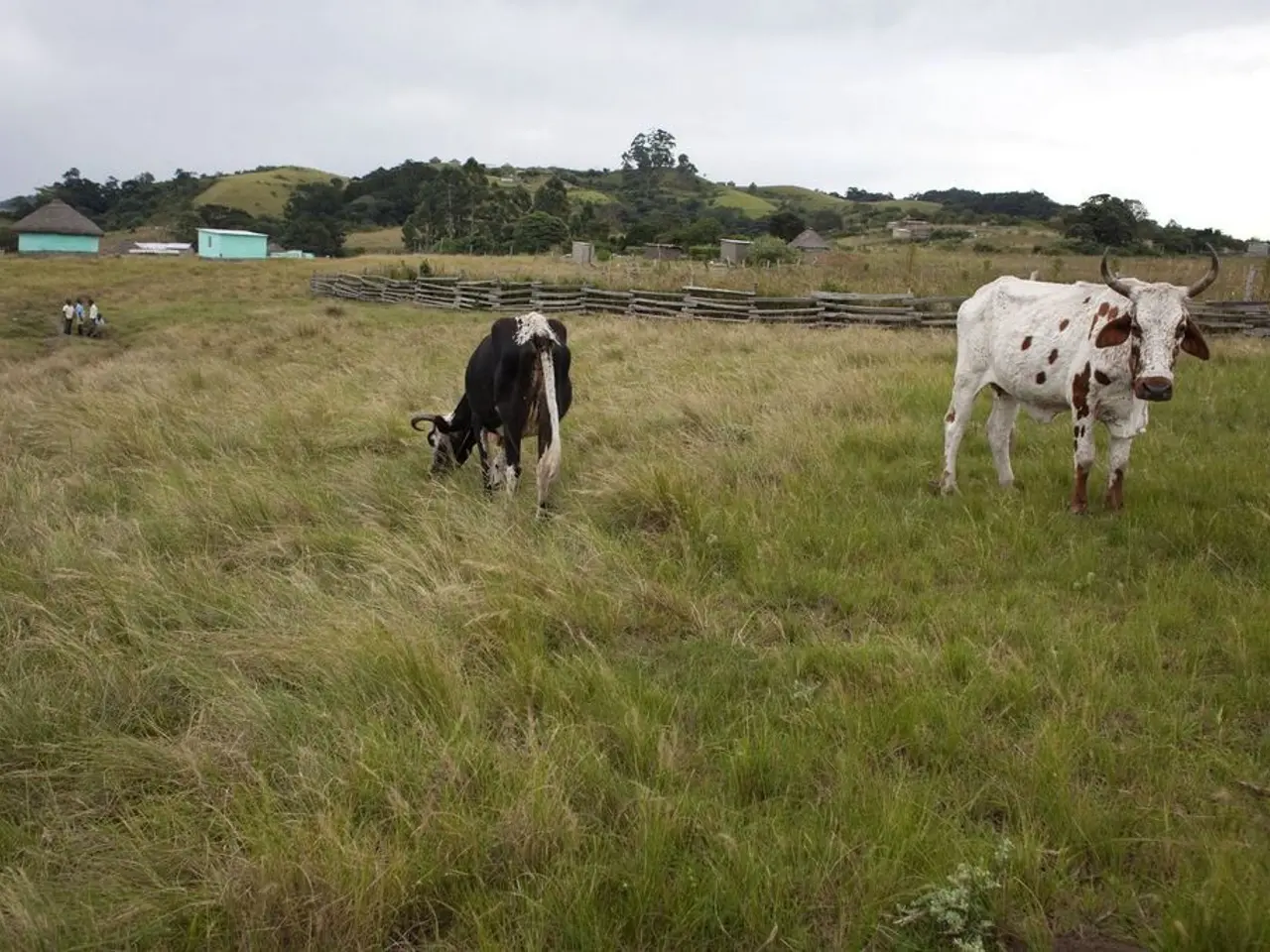Grounded in Statistical Evidence, Steeped in Respect
In a shift from the traditional Western focus on reducing methane emissions from ruminant livestock, there is growing recognition of the broader ecological and cultural benefits that ruminants and pasture systems provide in regions like China, the Indian subcontinent, and Southeast Asia.
CMNF Farming in India
The state of Andhra Pradesh, India, is transitioning towards Community Managed Natural Farming (CMNF), a farming system that relies on natural crop growth and minimal synthetic fertilizers and pesticides, with the cow playing a central role. The goal is to achieve 100% adoption within ten years.
Rice and Ruminants in Asia
Rice is a staple food in many Asian cultures, and in regions like Thailand, there are over 3,500 known varieties of rice. In methane-producing paddies, cows play a significant role, not just as a source of meat or milk, but also in contributing to soil health and agroecological balance.
The Role of Ruminants in Soil Health
Professor Harold van Es and Professor Rattan Lal have highlighted the vital role of the grazing ruminant in sustaining soil health. In South Africa, Dr James Bennett's work has shown the importance of grazing ruminants in utilizing crop residues. These practices not only boost soil microbial life and increase organic carbon but also regenerate degraded land and preserve agrobiodiversity and traditional knowledge.
Beyond Methane Abatement
While Western innovation focuses on methane abatement technologies, a more integrated perspective recognizing both emissions mitigation and the ecological and cultural roles of ruminants in diverse farming landscapes may offer more sustainable pathways globally. This approach is embodied in initiatives like the Pasture for Life community, which acknowledges the need for both measurement and reverence for the intangible life forces that support and nurture the land, plants, and animals in their care.
The Future of Farming
The Pasture for Life annual report highlights the phrase, "We are part of a hopeful future." This sentiment is echoed in the character Ren, interpreted as 'tolerance' in Chinese brush painting, which is also interpreted as 'the ability to feel and cultivate within ourselves goodness, love, and a capacity for service.' As we move towards a more sustainable future, it is clear that ruminants will continue to play a significant role in farming systems worldwide.
References
- Methane Eradication Photochemical System (MEPS)
- Jeevamrutha: A Traditional Microbial Fertiliser for Sustainable Agriculture
- MEPS: A Novel Approach to Methane Abatement in Livestock Housing
- Pasture-Fed Livestock: Climate-Friendly Meat Production
- Regenerative Grazing Systems: A Review
- The Role of the Grazing Ruminant in Sustaining Soil Health
- The Importance of Grazing Ruminants in Utilizing Crop Residues in South Africa
- Pasture for Life: A Holistic Approach to Sustainable Livestock Farming
- Community Managed Natural Farming: A Sustainable Approach to Agriculture
- Sikkim: The World's First Wholly Organic State
- Buffalo Dung: A Sustainable Energy Solution for Rural India
- The Mysteries of the Pasture: Recognizing the Intangible in Sustainable Agriculture
- Daniele Ibarra-Howell: The Importance of 'Reverence' in the Savory Institute's Work
- The Importance of Pastoral and Agro-Pastoral Systems
- Two-Thirds of the World's Farmland is Under Pasture
- The Role of Livestock and Livelihoods in Africa
- The Cambodians, the Vietnamese, and the Laotians: The Value of Rice Beyond Nutrition
- The Grazing Ruminant: A Key to Biodiversity and Land Regeneration
- Malaysia: A Mosaic of Religious Landscapes
- The Character Ren: Tolerance and the Ability to Feel and Cultivate Goodness
- The Role of Goats in Food Security in Africa
- Robin Wall Kimmerer: Recognizing the Mysteries Where a Tape Measure is Not Appropriate
- The South East Asian Proverb: 'The Cambodians Grow the Rice, the Vietnamese Sell the Rice but the Laotians Listen to the Rice Growing'
- Embracing the community-managed natural farming approach in India and the importance of the cow in these systems further extends the discussion on soil health to the realm of health-and-wellness and lifestyle, as the wellness of the soil, in turn, contributes to overall biodiversity and environmental-science.
- The role of ruminants in Asian rice paddies is multifaceted, not only providing a vital source of food and revenue but also contributing to the agroecological balance and biodiversity as outlined in environmental-science and education-and-self-development literature.
- A shift in focus from methane abatement technologies to a more comprehensive understanding of the ecological and cultural roles of ruminants demands further study in the discipline of science, specifically in the field of general-news and sustainability reports.
- Initiatives like the Pasture for Life community emphasize the need for both measurable results and reverence for the intangible life forces that support diverse farming landscapes, intertwining the environmental-science aspect with the emotional and spiritual dimensions that can influence personal lifestyle and education-and-self-development.
- As ruminants continue to play a significant role in farming systems worldwide, the character Ren, symbolizing tolerance, encompasses the spirit that drives these shifts in agricultural practices to achieve sustainable and harmonious coexistence with the environment in sports, health-and-wellness, and cultural news arenas.




